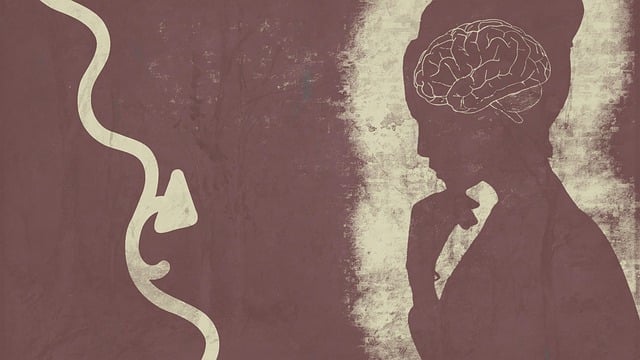The media significantly influences public perception of mental health, with accurate portrayals encouraging therapy for adults and open conversations. Incorporating nuanced narratives featuring effective treatments like biofeedback can empower viewers, reduce stigma, and enhance mental health discourse. By integrating biofeedback into traditional therapy, individuals gain tools to manage stress and anxiety, promoting emotional well-being and better mental health outcomes. Media can play a pivotal role in shaping understanding through authentic representations involving those with lived experiences and collaboration with mental health professionals. Integrating biofeedback into media literacy programs offers a promising strategy for mental health awareness, empowering individuals to manage their physiological responses and improve emotional well-being.
Mental illness representation in media significantly impacts public understanding of mental health. This article explores strategies to challenge stereotypes and promote accurate portrayals, with a focus on biofeedback as a therapeutic tool for adults. We discuss how biofeedback, a non-invasive technique, can enhance mental well-being and provide insights into media literacy programs integrating these techniques. By understanding the power of media, we can foster more empathetic and informed societies, offering better support for those facing mental health challenges.
- Understanding the Impact of Media Representation on Mental Health
- Exploring Biofeedback as a Therapeutic Tool for Adults
- Strategies for Promoting Accurate and Helpful Mental Illness Portrayals in Media
- Integrating Biofeedback Techniques into Media Literacy Programs
Understanding the Impact of Media Representation on Mental Health

The media plays a significant role in shaping public perception about mental health, often influencing how individuals understand and respond to various conditions. Positive and accurate representation can foster empathy, reduce stigma, and encourage those struggling to seek therapy for adults or other forms of support. Conversely, negative or stereotypical portrayals can perpetuate fear, discrimination, and misinformed judgments, hindering individuals from accessing the necessary mental health education programs design and burnout prevention strategies.
When media portrays mental illness with nuance and authenticity, it has the potential to empower viewers by showcasing recovery paths, highlighting effective treatments like biofeedback, and promoting conversations that encourage open dialogue. This shift can lead to increased awareness, improved access to care, and ultimately, better outcomes for those navigating their mental health journeys.
Exploring Biofeedback as a Therapeutic Tool for Adults

Biofeedback, a therapeutic technique that has gained prominence in recent years, offers adults an innovative approach to managing mental health challenges. This non-invasive method empowers individuals by providing them with real-time data and control over their physiological responses. Through sensors attached to various parts of the body, biofeedback systems detect physical changes like heart rate, muscle tension, and brainwave patterns. This information allows clients to learn to recognize when they’re experiencing stress or anxiety and employ coping strategies to regulate these reactions.
Incorporating biofeedback into therapy for adults can significantly enhance traditional treatment methods, particularly in conjunction with empathy building strategies and compassion cultivation practices. By promoting emotional well-being promotion techniques, biofeedback helps individuals gain a deeper understanding of their bodies’ responses to stress, fostering self-awareness and resilience. This knowledge enables them to employ mindfulness, relaxation, and other proven techniques to manage symptoms effectively, ultimately contributing to improved mental health outcomes.
Strategies for Promoting Accurate and Helpful Mental Illness Portrayals in Media

Media has a significant impact on shaping public perception about mental illness. To promote accurate and helpful representations, various strategies can be adopted. One effective approach is to involve individuals with lived experiences of mental health challenges in the creation process. Their insights and stories ensure authenticity, allowing for more nuanced portrayals that resonate with audiences. Additionally, collaborating with mental health professionals like therapists for adults can provide expertise in depicting conditions accurately.
Integrating therapy for adults, biofeedback, and conflict resolution techniques into media narratives can offer valuable insights into managing mental wellness. By showcasing these strategies in relatable contexts, the media can help reduce stigma and promote burnout prevention. Encouraging open conversations about mental health through compelling storytelling can empower viewers to seek support when needed. This collective effort can contribute to a more understanding and empathetic society, fostering positive changes in mental illness representation.
Integrating Biofeedback Techniques into Media Literacy Programs

Incorporating biofeedback techniques into media literacy programs offers a compelling approach to enhance mental health awareness and provide therapy for adults. Biofeedback is a powerful tool that enables individuals to gain control over their physiological responses, thereby improving emotional well-being. By integrating this technique into media education, participants can learn to recognize and manage stress and anxiety triggered by media content. Through hands-on exercises, they can understand how their bodies react to different stimuli, fostering a deeper sense of self-awareness.
Media literacy programs can benefit from biofeedback’s ability to promote relaxation and reduce symptoms associated with mental health issues. This method is particularly useful in community outreach program implementations, where individuals might face heightened stress or anxiety related to social interactions or the sharing of personal experiences. A risk assessment for mental health professionals can guide the integration process, ensuring that biofeedback techniques are utilized ethically and effectively to support participants’ mental health journeys.
Media representation of mental illness plays a pivotal role in shaping public perception and understanding. By advocating for accurate portrayals, we can foster empathy and reduce stigma. Integrating biofeedback techniques into media literacy programs offers a promising solution to enhance therapeutic outcomes and promote mental well-being. Through education and mindful creation, we have the power to revolutionize how mental health is presented, ensuring it serves as a catalyst for positive change rather than perpetuating harmful stereotypes. This collaborative approach, combining therapy for adults like biofeedback with responsible media representation, can ultimately contribute to a more compassionate society.








